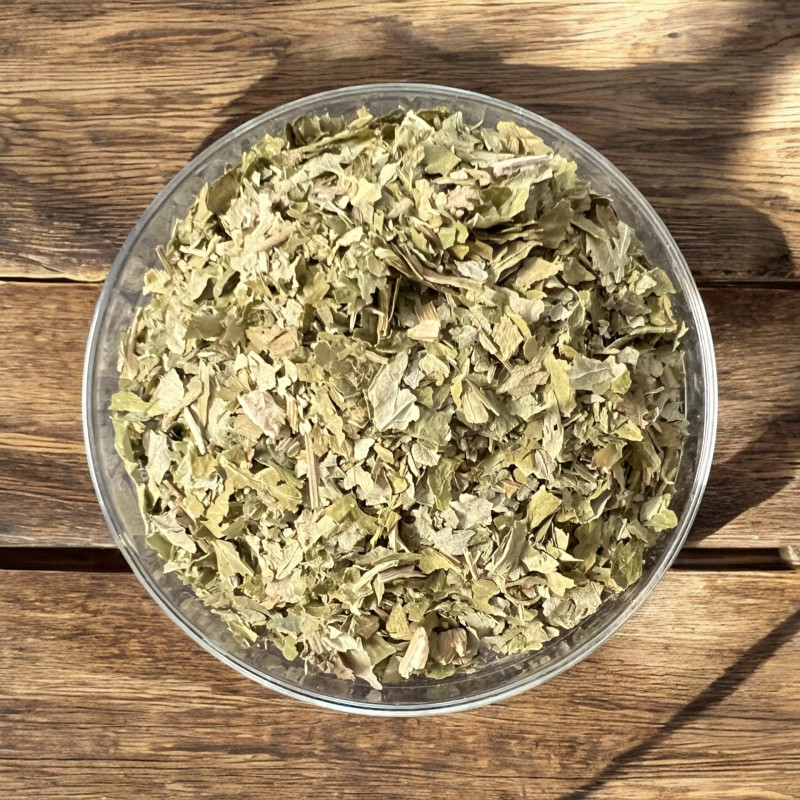
Reference: 3N7137901


A cousin of celery, carrots, and anise, angelica is used in both jams and liqueurs, as it releases a powerful fragrance when infused.
 Delivery
Delivery
Mondial Relay
 Returns
Returns
See conditions
 Payments
Payments
100% secure
Livré en sachet refermable
Uses in Cooking and Beyond:
Angelica is used in baking, in jams (notably paired with rhubarb and currants to reduce acidity), in confections as candied stems, and in liqueurs. It can also be used in infusions for its therapeutic benefits, as a spice to enhance the flavor of sauces, especially for meats and fish (particularly trout), and to flavor seafood broths and omelets. Its liqueur can pleasantly flavor soufflés or pancakes.
Angelica Liqueur Recipe:
Combine all ingredients (except sugar) in the alcohol and let it steep for 6 weeks. Filter.
Prepare a syrup with the sugar, then mix it with the alcohol and bottle it.
As a true "herb for liqueurs," angelica, whether alone or combined with other aromatic plants, imparts its fragrance to many ratafias, wines, creams, and famous liqueurs, including "angelica liqueur from Niort."
For a long time, it has been credited with numerous medicinal virtues, and it is also a powerful repellent against fleas. It is one of the very few medicinal plants native to the Northern Hemisphere.
Who Am I?
Origin: France
Scientific Name: Angelica archangelica
Common Names: True angelica, garden angelica, archangel, field angelica, herb of angels, herb of the Holy Spirit, imperial herb.
This highly aromatic plant belongs to the Apiaceae family and is used both as a culinary herb and for medicinal purposes. It grows spontaneously in Northern and Eastern Europe, Iceland, and as far as Greenland and Siberia, preferring cold, humid climates where it can be found on the banks of wetlands. The plant has specific growth requirements, needing fertile, always moist, yet sunny soil.
As a biennial plant (dying in the year of its flowering and reproducing by reseeding), it can reach heights of 1 to 2 meters. Its flowers appear from July to August and form large umbels of greenish flowers. The leaves and stems are harvested between May and June in the second year of growth.
A Little History:
Legend has it that the Archangel Raphael brought angelica root to Charlemagne to save his army from a plague. In the Middle Ages, people chewed angelica leaves and wore seed necklaces around their necks to protect against contagion during a plague outbreak in Niort in 1602.
Originating in Scandinavia, angelica was introduced to France via the Ardennes in the 12th century, where it was primarily used by monks in cloisters for its anti-plague properties.
Once traditionally harvested in Auvergne, 250 tons were collected in the mid-20th century.
In the wild, the plant is protected in Nord-Pas-de-Calais and Haute-Normandie.
Data sheet
Reference: 3N7137901
Reference: gentiane
Reference: 9N7669901
Reference: laurierE
Reference: 121320001
Reference: 7K4954201
Reference: PL-EK0-07
Reference: aubepinefl
Reference: 20731803
Reference: 112930001
Reference: 6K4878201
Reference: 6L5609803
Reference: 9K5061101
Reference: 11N7866301
Reference: 408164502
Reference: gentiane
Reference: 3N7201902
Reference: 6N7456401
Reference: 9N7669901

A cousin of celery, carrots, and anise, angelica is used in both jams and liqueurs, as it releases a powerful fragrance when infused.